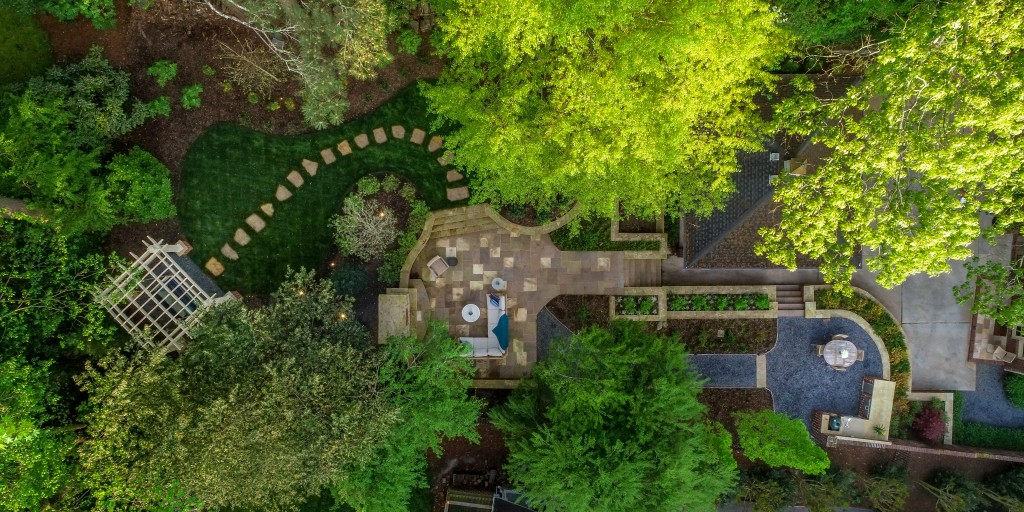The 30-Second Trick For Landscape Design
Table of ContentsIndicators on Landscape Design You Should KnowThe 10-Second Trick For Landscape DesignLittle Known Facts About Landscape Design.The Landscape Design Statements
When developing a residential landscape, one of the most crucial step is to put an intend on paper. Establishing a plan of attack will certainly save you time and money and is most likely to lead to an effective layout. Landscape Design. A plan of attack is developed via the 'design process': a detailed approach that takes into consideration the environmental problems, your wishes, and the elements and concepts of layoutThe five steps of the style procedure include: 1) performing a website supply and evaluation, 2) establishing your requirements, 3) producing functional diagrams, 4) developing conceptual layout strategies, and 5) drawing a last layout strategy. The very first three steps establish the visual, practical, and horticultural needs for the layout. The last two actions then use those requirements to the production of the final landscape plan.
This is an essential step for both plant selection and placement and locating family members tasks and functions. It's essential because the exact same climate conditions that affect the plantstemperature, humidity, rainfall, wind, and sunlightalso influence you, the user. The next action is to make a checklist of your demands and desiresthis aids you identify how your lawn and landscape will certainly be made use of.
The practical representation is after that used to find the task spaces on the website and from this layout a theoretical strategy is created - Landscape Design. The last step is a last style that includes all the hardscape and planting information that are essential for installment. Throughout the layout procedure there are 10 important things to consider: for plant option and task area by considering what you want and need to assist figure out forms and arrange rooms by marking task locations and linking with aspects for both the environment and the user by utilizing massing and layering techniques such as transition areas and prime focus in the materials, the colors, and the surface area structures for the growth and upkeep of plants by making use of sustainable design methods A detailed stock and analysis of the site is essential to identify the environmental problems for plant development and the very best use the website
Not known Details About Landscape Design
It is always best to utilize plants that will certainly grow in the existing dirt. Where plants expand well, keep in mind the dirt problems and use plants with comparable expanding needs.

Sun/shade patterns, the amount and length of direct exposure to sun or color (Number 1), develop microclimates (often called microhabitats). Recording website problems and existing plant life on a base map will certainly reveal the place of microclimates in the yard. Plants generally come under a couple of of 4 microclimate categories-full sunlight, partial color, color, and deep color.
Energies such as power lines, septic containers, underground utilities and roofing overhangs establish plant location. Make use of a surveyor's plat of your building for the limits and area of your home.
Landscape Design Fundamentals Explained
Budget problems include the materials, preliminary setup prices and the on-going upkeep expenses. Identify the time and money you are willing to take into maintaining the plants and hardscape-be realistic regarding your objectives and ability. Figure 3. Existing usage areas. Credit Report: Gail Hansen, UF/IFAS Figure 4. Suggested use locations. Debt: Gail Hansen, UF/IFAS There are various landscape style styles- from simple to facility, yet it is helpful to pick special info one to guide your plant and product selection.

Decide if you desire to open your backyard, close your lawn, or a little of both, to these views. To put it simply, do you desire the garden to enclose the room around you and associate primarily to your house, or do you desire the yard to open sights and look outside, associating with the surroundings? This will certainly offer you a starting point to consider a motif.
Landscape Design Things To Know Before You Buy

This is called "feeling of location", which implies it fits with the surroundings. There are both type styles and design themes. Every garden must have a type motif, yet not all gardens have a design motif. In truth, lots of residential yards have no particular design other than to blend with your house by duplicating information from the style such as products, shade, and type.
In a form motif the company and shape of the spaces in the lawn is based either on the form of your home, the shape of the locations in between the house and the property borders, or a favorite shape of the property owner. The form motif identifies the form and company (the format) of the spaces and the web links between them.
